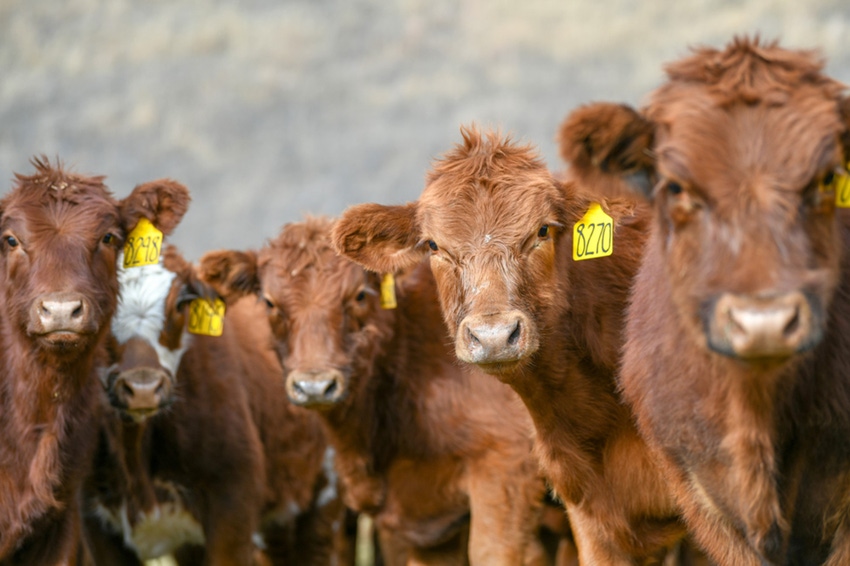Feed prices favor limit-feeding stockers a high energy diet
There are several advantages to a limit feeding approach for growing calves.
September 5, 2023

By Erin Laborie, University of Nebraska Extension
For cattle producers that are set up to feed calves in a bunk, limit-feeding a high energy diet may be a cost-effective option for growing calves this fall and winter. While limit-feeding is not a new concept, current forage prices relative to grain/co-products may make it an attractive alternative to feeding high roughage growing diets. For instance, hay priced at $200/ton with a total digestible nutrients (TDN) value of 52% equates to approximately $0.22 per pound of TDN. However, $4.80/bu. corn (88% TDN) and wet distillers grains priced at $75/ton (108% TDN) each come out to about $0.11 per pound of TDN.
Research at Kansas State University has looked at limit-feeding calves a high energy diet at 2.2% of body weight compared to a full-fed high roughage diet (2.8% of body weight) for a 90-day backgrounding period. Both diets included 40% wet corn gluten feed (dry matter basis) and varying amounts of corn, alfalfa, prairie hay, and a supplement. Stockers limit fed the high energy diet were more efficient and gained 2.5 lb./day whereas stockers full-fed the high-roughage diet gained 2.9 lb./day. Backgrounding system had little to no effect on finishing performance or carcass characteristics.
Advantages of limit fed, high energy diets
There are several advantages to a limit feeding approach for growing calves:
Reduced mixing time and loads of feed due to less forage in the diet.
Less feed falling out of bunks and being wasted, reducing rodent issues.
More efficient use of bunk space. If time, labor, and pen design allow, consider leveraging the amount of bunk space in a pen by feeding one group of calves in the morning and then rotating in a second group in the evening.
Improved health management of calves. Healthy calves will be eager to approach the bunk at feeding time, making lethargic, sick calves easier to spot.
Improved pen conditions and maintenance due to less manure. Research from Kansas State University has shown a 40-45% reduction in manure output when limit feeding stockers. That is huge!
Tips for limit-feeding stockers
When getting calves started on feed, place long stemmed hay in bunks prior to calves arriving. For the first day’s feed delivery of the limit-fed diet, start calves at an intake of approximately 0.75% of body weight (dry matter basis) and work up to 2.2% of body weight within about 14 days. As calves grow, be sure to adjust the amount of feed delivered so that target gains can be maintained. Feeding at a consistent time each day and providing adequate bunk space (at least 15 inches per head) can help prevent digestive upsets and set calves up for success.
For assistance with evaluating cost differences of feedstuffs, consider using the Feed Cost Cow-Q-Lator. The Nebraska Extension Beef Team is always available to help producers evaluate feeding options and develop rations to meet cattle nutrient needs.
You May Also Like


.png?width=300&auto=webp&quality=80&disable=upscale)
